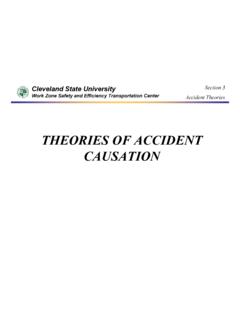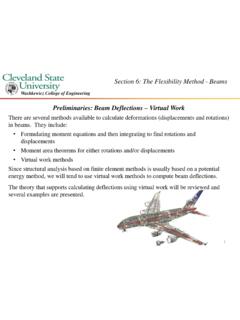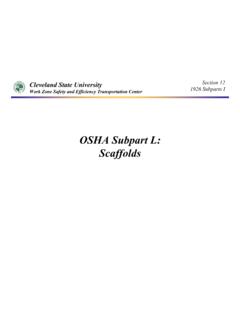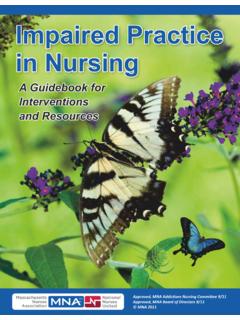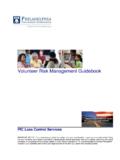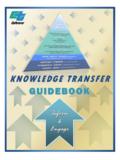Transcription of The Content Analysis Guidebook - Cleveland State …
1 To my family Bob, Dorian, and Quinn, all of whom contributed to the 2nd edition in their own wayIn memoriam In memory of my colleague and friend Paul D. Skalski, PhD, whose contributions were many and whose spirit will never fade. His substantial abilities, enthusiasm, and support were essential to both editions of this Content Analysis GuidebookSecond Edition Kimberly A. NeuendorfCleveland State UniversityCopyright 2017 by SAGE Publications, rights reserved. No part of this book may be reproduced or used in any form or by any means, electronic or mechanical, including photocopying, recording, or by any information storage and retrieval system, without permission in writing from the in the United States of AmericaLibrary of Congress Cataloging-in-Publication DataNames: Neuendorf, Kimberly A.
2 , : The Content Analysis Guidebook / Kimberly A. Neuendorf, Cleveland State University, : Los Angeles : SAGE, [2017] | Earlier edition: 2002. | Second edition bibliographical references and : LCCN 2015044657 | ISBN 9781412979474 (pbk. : alk. paper)Subjects: LCSH: Sociology Research Methodology. | Content Analysis (Communication)Classification: LCC HM529 .N47 2017 | DDC dc23 LC record available at book is printed on acid-free 17 18 19 20 10 9 8 7 6 5 4 3 2 1 FOR INFORMATION:SAGE Publications, Teller RoadThousand Oaks, California 91320E-mail: Publications Oliver s Yard55 City RoadLondon, EC1Y 1 SPUnited KingdomSAGE Publications India Pvt. 1/I 1 Mohan Cooperative Industrial AreaMathura Road, New Delhi 110 044 IndiaSAGE Publications Asia-Pacific Pte.
3 Church Street#10-04 Samsung HubSingapore 049483 Acquisitions Editor: Karen OmerEditorial Assistant: Sarah DillardProduction Editor: Libby LarsonCopy Editor: Amy HarrisTypesetter: C&M Digitals (P) : Jennifer GrubbaIndexer: Jeanne R. BusemeyerCover Designer: Candice HarmanMarketing Manager: Amy Lammers2017 Content Analysis in the Interactive Media Ageby Paul D. Skalski, Kimberly A. Neuendorf, and Julie A. CajigasThis chapter addresses the implications of interactive media for Content Analysis . In the years since the publication of the first edition of this text, interactive media technologies and applications have become a ubiqui-tous feature of daily life. They span interpersonal, organizational, and mass levels of communication.
4 Their use is stimulated and enhanced by such popular manifestations as touch-screen mobile devices such as Apple s iPhone and iPad, motion-controlled video games such as the Nintendo Wii and Microsoft Kinect, and social-media platforms such as Twitter, Facebook, Instagram, and media are rapidly replacing traditional media and modes of communication such as newspapers, magazines, old-school television, and even the traditional telephone. For example, the hypothetical, personalized daily newspaper of the future, the Daily Me (compiled and received electroni-cally, as predicted by MIT Media Lab founder Nicholas Negroponte in the 1990s), has pretty much come to pass with online newsfeeds and delivery systems that reinforce users specific interests.
5 In the future, researchers may not Content analyze stories in daily newspapers, but they will need to analyze the universe of individuals Daily Me news has become the leading interactive media Content generator fol-lowing its dramatic ascension in popularity after being opened to the public in 2006. By the third quarter of 2011, Internet users were devoting more time to Facebook than to any other web site a whopping billion min-utes a month (Nielsen, 2011). In 2013, Facebook accounted for more than 10% of the total time Americans spent online (Weigley, 2013). In 2014, Facebook still ranked number one, with around 71% of Internet users in the United States logging on (Duggan et al., 2015). Social media platforms may rise and fall in popularity, but interactive and social media appear to be here to stay, and they have had a dramatic effect on life globally.
6 In the aftermath 202 The Content Analysis GUIDeBooKof the Japanese earthquake of 2011, for example, the social media of the world followed and documented the crisis, aided in recovery efforts through online applications such as Google s Person Finder, and, as noted on cable network MSNBC, The survivors will never forget the terror of that day, and thanks to the growing power of social media, it will also become a part of the collective record preserved for future generations, 140 characters at a time (Snow, 2011).In order to Content analyze interactive media Content , it s important to understand that interactive media users are more than just receivers or con-sumers, as they were with earlier media.
7 They have an active role in adapting, altering, and even producing Content . The interactive media revolution that began with video games in the 1970s, continuing with home computers in the 1980s and the Internet in the 1990s, has grown and evolved in the early 21st century into what has been dubbed the Web term Web is attributed to technology guru Tim o Reilly (2005), who used it to refer to changes happening to the Internet after the dot-com investment bust in 2001. During this time, sites such as Wikipedia, Google, and personal blogs burst onto the scene, revolutionizing Content generation on the Internet. Web platforms drastically changed the ability of the aver-age user to generate online Content by including interfaces that require little or no technical knowledge.
8 The result was an immediate shift from profes-sional writers, editors, and other gatekeepers as the sole producers of medi-ated Content toward the empowerment of nonprofessionals to use sophisticated media for the promulgation of messages. Potter (2011) nicely sums up what most see as the core characteristics of Web :Web is a perspective about the Internet that fosters a social dynamic where people have the freedom to share their work through all sorts of open web sites. People are free to access all of these sites, use what they want, create their own messages, and make their messages available to anyone. The easy availability of these collective resources celebrates open participation, and this results in an enormous increase in creative activity.
9 (p. 213)Corresponding to the increase in creative activity described by Potter is an enormous increase in mediated Content . Web and other digital advances, coupled with the wide diffusion of high-speed wireless Internet connectivity, give today s media user rapid access to and unprecedented power over Content . Importantly, the various message functions outlined in Chapter 1 for individual, interpersonal, group, organizational, and mass purposes are all readily found online, in unprecedented volume, and with unprecedented access. Private interpersonal communications, once studied only in the laboratory or via participant observation in the field, are now archived and available through the Content of social media.
10 Public organi-zational messages, such as corporate responsibility statements, once only Chapter 7 Content Analysis in the Interactive Media Age 203available to and targeted to a select group of employees and stockholders, are found openly on virtually all corporate web sites. And mass messages such as TV programs and commercials, once available to a researcher only if recorded at the time of airing, are now heavily archived for on-demand online access and are immediately accessible even on the run via mobile devices such as smartphones and , Content has never been so readily available. The Internet has swelled to contain literal libraries of information, and not just of printed Content , but of audio and visual material as well.

